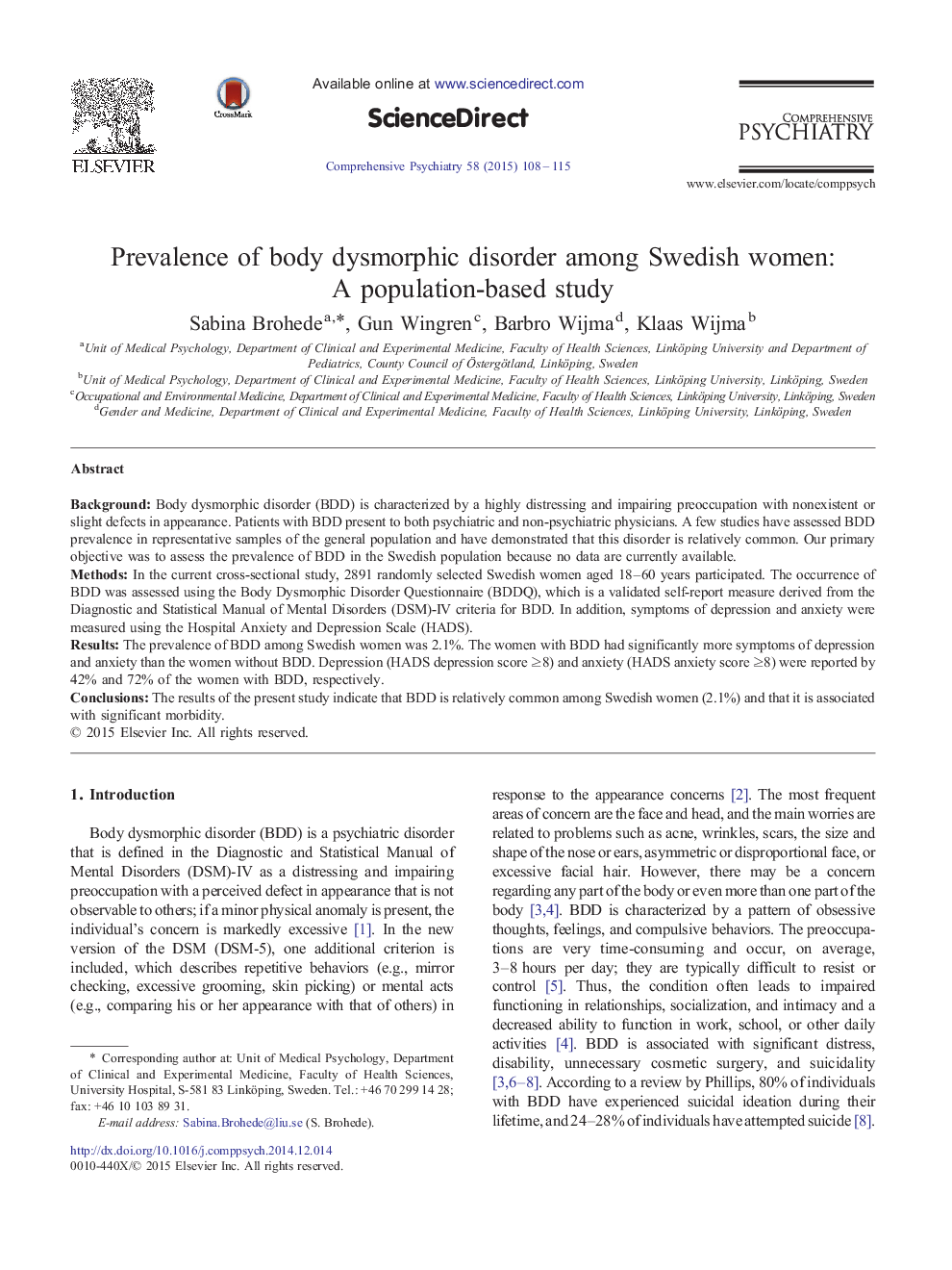| Article ID | Journal | Published Year | Pages | File Type |
|---|---|---|---|---|
| 317390 | Comprehensive Psychiatry | 2015 | 8 Pages |
Abstract
Background
Body dysmorphic disorder (BDD) is characterized by a highly distressing and impairing preoccupation with nonexistent or slight defects in appearance. Patients with BDD present to both psychiatric and non-psychiatric physicians. A few studies have assessed BDD prevalence in representative samples of the general population and have demonstrated that this disorder is relatively common. Our primary objective was to assess the prevalence of BDD in the Swedish population because no data are currently available.
Methods
In the current cross-sectional study, 2891 randomly selected Swedish women aged 18–60 years participated. The occurrence of BDD was assessed using the Body Dysmorphic Disorder Questionnaire (BDDQ), which is a validated self-report measure derived from the Diagnostic and Statistical Manual of Mental Disorders (DSM)-IV criteria for BDD. In addition, symptoms of depression and anxiety were measured using the Hospital Anxiety and Depression Scale (HADS).
Results
The prevalence of BDD among Swedish women was 2.1%. The women with BDD had significantly more symptoms of depression and anxiety than the women without BDD. Depression (HADS depression score ≥8) and anxiety (HADS anxiety score ≥8) were reported by 42% and 72% of the women with BDD, respectively.
Conclusions
Related Topics
Life Sciences
Neuroscience
Biological Psychiatry
Authors
Sabina Brohede, Gun Wingren, Barbro Wijma, Klaas Wijma,
